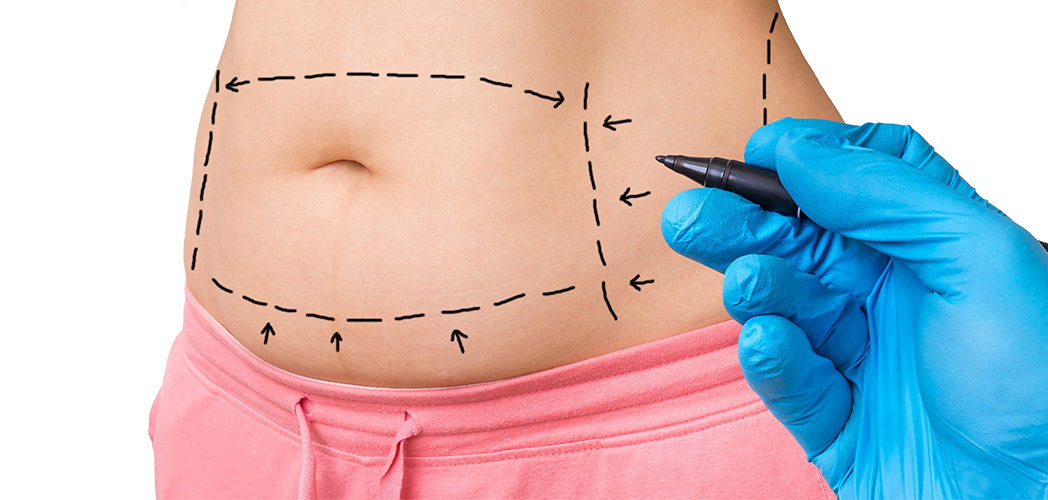
A tummy tuck, also known as abdominoplasty, is a surgical procedure designed to remove excess fat and skin from the abdominal area, resulting in a flatter and more toned abdomen. This popular cosmetic surgery can help individuals achieve their desired body shape and boost their self-confidence. In this article, we will explore the key aspects of tummy tuck surgery, including its benefits, procedure, recovery, and potential risks.
Improved Abdominal Contour: Tummy tuck surgery can effectively remove stubborn fat deposits and loose skin, resulting in a smoother and tighter abdominal contour. This can enhance the overall body proportion and create a more aesthetically pleasing appearance.
Muscle Repair: In addition to removing excess fat and skin, tummy tuck surgery can also repair weakened or separated abdominal muscles, which commonly occurs after pregnancy or significant weight loss. By tightening these muscles, the procedure can restore core strength and improve abdominal tone.
Enhanced Self-Confidence: A flat and well-toned abdomen can significantly boost self-confidence and body image. Tummy tuck surgery can help individuals feel more comfortable and satisfied with their appearance, allowing them to enjoy a more active and fulfilling lifestyle.
Before undergoing a tummy tuck, it is essential to consult with a qualified plastic surgeon who will assess your specific needs and goals. The procedure typically involves the following steps:
Anesthesia: Tummy tuck surgery is performed under general anesthesia to ensure the patient's comfort and safety throughout the procedure.
Incision: The surgeon will make an incision on the lower abdomen, usually below the bikini line, to minimize visible scarring. The length and shape of the incision may vary depending on the extent of correction required.
Tissue Manipulation: The surgeon will carefully remove excess fat and skin from the abdominal area. In cases where muscle repair is needed, the weakened or separated muscles will be sutured together to create a firmer abdominal wall.
Skin Redraping: The remaining skin will be redraped over the newly contoured abdomen, and any excess skin will be trimmed away. The surgeon will make sure to create a natural-looking belly button by reshaping it as needed.
Incision Closure: The incisions will be meticulously closed using sutures, and dressings or bandages will be applied to support the healing process.
The recovery period after a tummy tuck surgery can vary from patient to patient, but it generally involves the following:
Hospital Stay: In most cases, patients are required to stay in the hospital for a day or two to monitor their initial recovery and manage any post-operative discomfort.
Post-Operative Care: Patients will receive detailed instructions on how to care for their incisions, including proper cleaning and dressing changes. It is crucial to follow these instructions to minimize the risk of infection and ensure optimal healing.
Physical Activity: Strenuous activities and heavy lifting should be avoided for several weeks after the surgery to allow the body to heal properly. Light walking is encouraged to promote circulation and reduce the risk of blood clots.
Results: The final results of a tummy tuck may take several months to fully manifest as the body gradually heals and the swelling subsides. However, most patients experience a noticeable improvement in their abdominal contour and overall body shape soon after the procedure.
While tummy tuck surgery is generally safe, it is essential to be aware of the potential risks involved. These may include:
Scarring: Although efforts are made to minimize scarring, it is important to understand that tummy tuck surgery will leave a permanent scar. However, the scar will typically fade over time and can be easily concealed under clothing.
Infection: As with any surgical procedure, there is a risk of infection. It is crucial to follow the post-operative care instructions provided by the surgeon to minimize this risk.
Blood Clots: Prolonged periods of inactivity after surgery can increase the risk of blood clots. Patients are often advised to move around periodically and wear compression garments to promote healthy blood circulation.
Numbness or Sensation Changes: Some patients may experience temporary or permanent changes in sensation or numbness in the abdominal area. This typically resolves over time but may persist in rare cases.
Tummy tuck surgery offers numerous benefits, including improved abdominal contour, muscle repair, and enhanced self-confidence. By understanding the procedure, recovery process, and potential risks, individuals can make an informed decision regarding their desire to undergo a tummy tuck. Consulting with a qualified plastic surgeon is crucial to determine candidacy and achieve the desired results. With proper care and realistic expectations, tummy tuck surgery can be a transformative step towards a flatter and more toned abdomen.